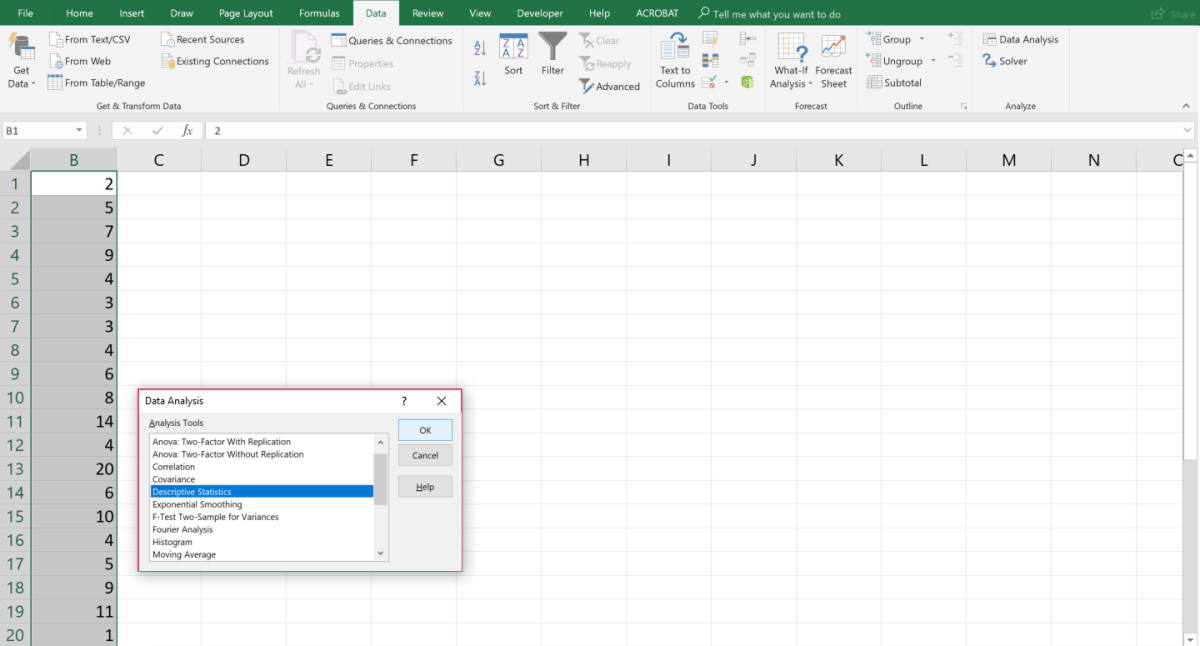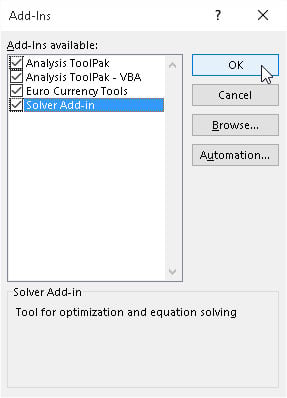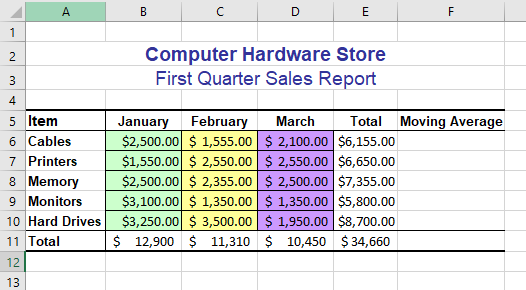

Some tools generate charts in addition to output tables. You provide the data and parameters for each analysis, and the tool uses the appropriate statistical or engineering macro functions to calculate and display the results in an output table. If you need to develop complex statistical or engineering analyses, you can save steps and time by using the Analysis ToolPak.
#Using analysis toolpak excel 2016 for mac
This makes sense when we look at the graph of the two data sets, they seem to generally move up and down together.Excel for Microsoft 365 Excel for Microsoft 365 for Mac Excel 2021 Excel 2021 for Mac Excel 2019 Excel 2019 for Mac Excel 2016 Excel 2016 for Mac Excel 2013 Excel 2010 Excel 2007 More. This is indicating that there is a strong correlation between the two data sets. In this example the correlation between the two data sets, “ONEQ close” and “DIA close”, is the value that we are most interested in, and it is 0.95. There is no value in cell C2, mostly because of notation convenience, the matrix is symmetric along the diagonal and the value in cell C2 would be identical to the value in cell B3. The same is true with the value in cell C3, i.e., data from “DIA close” is also perfectly correlated with itself. The value in cell B2 has the value of 1 because the correlation of data from “ONEQ close” is perfectly correlated with itself. The tool outputs a numerical value of 1 if the data is perfectly correlated. The headings in cells B1, C1, A2 and A3, are simply taken from the labels in the first row of the input data. The Correlation matrix will be placed on a new Sheet: And, if not already selected, click on the radio button “New Worksheet Ply” (Ply just means a layer or unit). For this example, the range is from B3 to C256 (Excel will use absolute referencing, i.e., a $ will be placed before both the column and row reference):Īlso, for this example, click on “Labels in First Row” since we have included the field headings with the data selection.

Then click and drag (or click then shift click) over the data. If you prefer to highlight the range with the mouse, first click on the expand button for the Input Range In the resulting dialog box, select Correlation, then OKįor the Input Range simply type in the range (such as, B3:C256). To Run the Correlation Command, click inside the data sheet, then in the Data Tab click the Data Analysis command: Data -> Data Analysis Here is a sample of the first few and the last few lines of the example file of the data for one year (as well as a simple line graph of the data): (Data for Fidelity® Nasdaq Composite Tr Stk ETF (ONEQ) and SPDR® Dow Jones Industrial Average ETF DIA from: Data for the Example: For illustration purposes we are using the daily closing price data from the exchange traded funds ONEQ and DIA as proxy for the indexes. A value of 1 indicates a positive correlation, a value of 0 indicates no correlation, and a value of -1 means there is a negative correlation.įor this example, we are going to use data from two stock market indexes: NASDAQ Composite Index and the Dow Jones Industrial Average. Excel uses the Pearson function to calculate the correlation, which will return a value between 1 and -1. Once the Data Analysis tool box has been enabled, the correlation tool is ready to use.Ī Correlation is an indication as to whether there is a relationship between two data. Now on the Data Tab there will be a new command “Data Analysis”: Next click on the “Manage:” menu select Excel Add-ins then press GoĬlick on the Analysis ToolPak check box, and click on OK Here is a Step-by-Step to Enabling Analysis ToolPak:

In the File Tab, select Options, then in the left hand panel click on Add-ins.To enable the Analysis ToolPak do the following (here is the text version a step-by-step with screen captures follows): For the following example we are going to use Excel 2016 (similar steps are used for the 20 versions). Enable the Analysis ToolPak:Īlthough already installed with Excel, the Analysis ToolPak will need to be enabled through the Options menus.

#Using analysis toolpak excel 2016 how to
In this articular we are going to look at how to use the correlation tool in the Analysis ToolPak. Excel’s AnalysisToolPak offer a variety of routines for analyzing statistical, scientific and engineering data.


 0 kommentar(er)
0 kommentar(er)
